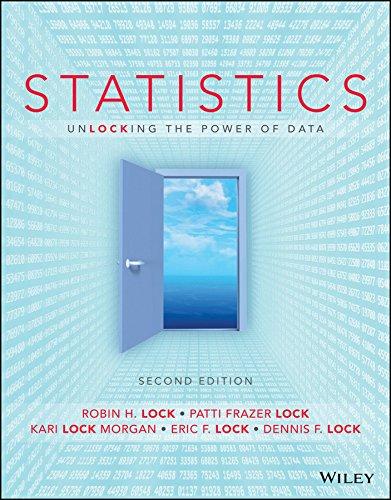Exercise 2.153 describes a study to compare the cost of restaurant meals when people pay individually versus
Question:
Exercise 2.153 describes a study to compare the cost of restaurant meals when people pay individually versus splitting the bill as a group. In the experiment 48 subjects were randomly assigned to eight groups of six diners each. Half of the people were told that they would each be responsible for individual meal costs and the other half were told to split the cost equally among the six people at the table. The data in SplitBill includes the cost of what each person ordered (in Israeli shekels) and the payment method (Individual or Split). Use StatKey or other technology to construct a randomization distribution using these data to test whether there is sufficient evidence to conclude that the mean cost is lower when diners are paying individually than when they split the bill equally.
Data From Exercise 2.153:
When the time comes for a group of people eating together at a restaurant to pay their bill, sometimes they might agree to split the costs equally and other times will pay individually. If this decision was made in advance, would it affect what they order? Some reseachers conducted an experiment where 48 Israeli college students were randomly assigned to eat in groups of six (three females and three males). Before ordering, half of the groups were told they would be responsible for paying for meals individually and half were told to split the cost equally among the six participants. The number of items ordered (Items) and cost of each person's order (Cost) in new Israeli shekels (ILS) was recorded and appears in the dataset SplitBill.
Step by Step Answer:

Statistics, Enhanced Unlocking The Power Of Data
ISBN: 9781119308843
2nd Edition
Authors: Robin H Lock, Patti Frazer Lock, Kari Lock Morgan, Eric F Lock, Dennis F Lock





